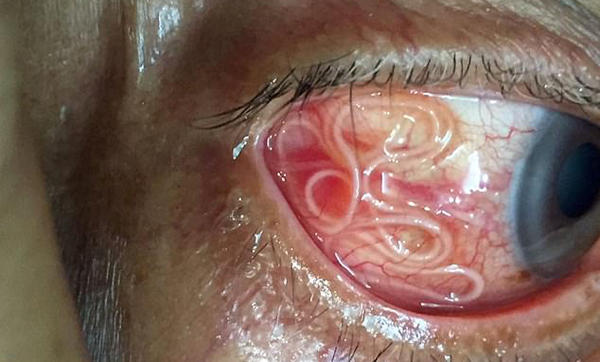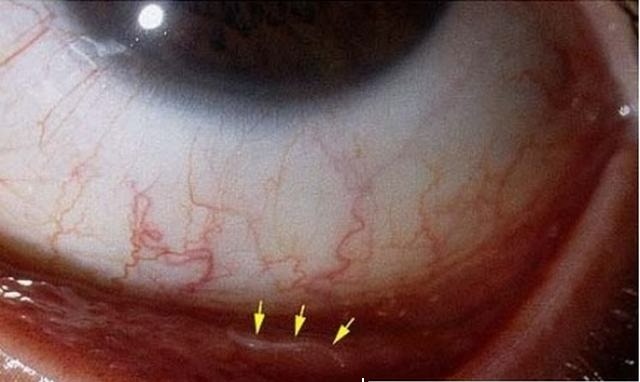A male patient complained of eye pain and itching, and upon examination, the doctor discovered a 15cm long worm wriggling inside.
WATCH VIDEO:
The 60-year-old male patient from Karnataka, India, visited a medical center in the town of Kundapur due to persistent eye pain and itching.
During the examination, Dr. Srikanth Shetty was shocked to find a white worm wriggling inside the patient’s right eyeball. The worm, which measured 15cm in length, was identified as belonging to the Wuchereria Bancrofti family (filarial worm).
Test results indicated that the patient’s blood still contained parasitic worms, so medication was prescribed for continued treatment.
Dr. Shetty warned that if the patient had delayed seeking treatment, the worm in his eye could have caused permanent vision loss.
Wuchereria Bancrofti is a parasitic worm in humans and is the cause of lymphatic filariasis, entering the body through mosquito bites.
Once inside the body, the larvae move from the bloodstream into the lymphatic system, maturing into adult worms after about a year.
A 15cm Worm Wriggling in a Patient’s Eye
Adult worms reproduce sexually, with the female laying larvae that live in the internal blood vessels and often appear in the peripheral blood at night. However, it is very rare for them to be found living in the eye.

According to the World Health Organization’s 2013 estimates, more than 120 million people are infected with filarial worms, with 40 million suffering deformities and disabilities caused by the disease, primarily in Asia, Central Africa, and Central and South America.
The condition is caused by filarial worms altering the lymphatic system, leading to abnormal swelling and causing severe pain and disability.
Cases of detecting filarial larvae in the blood require repeat treatment after 1 month if the blood test still shows the presence of larvae.
Woman Horrified as She Coughs Up Wriggling Worms While Tending to Flowers
A female patient occasionally experienced chest tightness and coughed up phlegm, along with small wriggling creatures identified as threadworms.















Leave a Reply